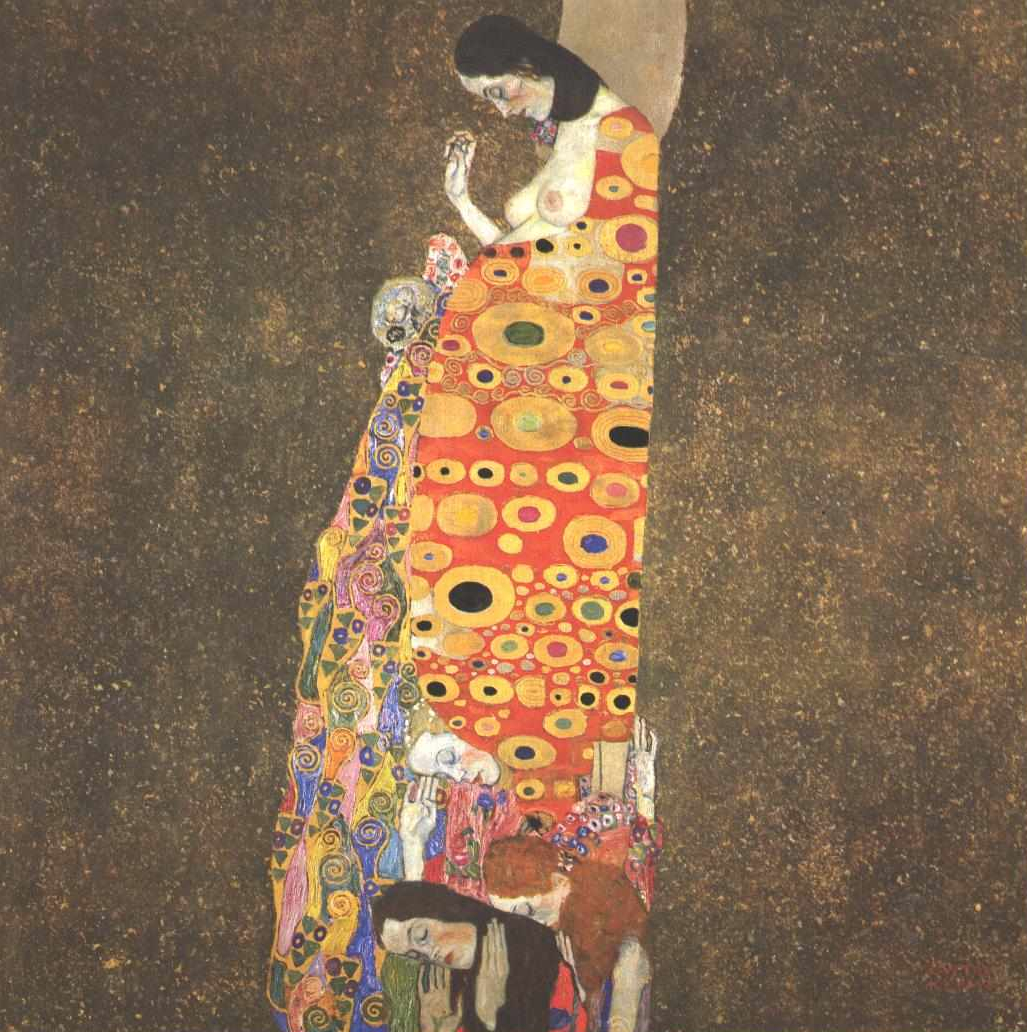art-Klimt.com
Gustav Klimt 1862-1918
Gustav Klimt - Hope 1908
 Hope |
The Museum of Modern Art, MoMA Highlights, New York: The Museum of Modern Art, revised 2004, originally published 1999, p. 54
A pregnant woman bows her head and closes her eyes, as if praying for the safety of her child. Peeping out from behind her stomach is a death's head, sign of the danger she faces. At her feet, three women with bowed heads raise their hands, presumably also in prayer—although their solemnity might also imply mourning, as if they foresaw the child's fate.
Why, then, the painting's title? Although Klimt himself called this work Vision, he had called an earlier, related painting of a pregnant woman Hope. By association with the earlier work, this one has become known as Hope, II. There is, however, a richness here to balance the women's gravity.
Klimt was among the many artists of his time who were inspired by sources not only within Europe but far beyond it. He lived in Vienna, a crossroads of East and West, and he drew on such sources as Byzantine art, Mycenean metalwork, Persian rugs and miniatures, the mosaics of the Ravenna churches, and Japanese screens. In this painting the woman's gold-patterned robe—drawn flat, as clothes are in Russian icons, although her skin is rounded and dimensional—has an extraordinary decorative beauty. Here, birth, death, and the sensuality of the living exist side by side suspended in equilibrium.